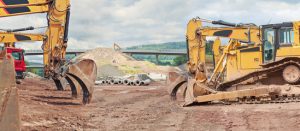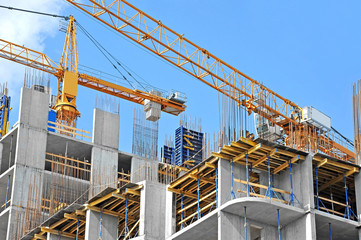Residential concrete services play a vital role in shaping the structure, durability, and overall aesthetic of a home. Concrete is one of the most dependable building materials available, known for its strength, stability, and long lifespan. Whether homeowners are upgrading outdoor spaces, repairing foundational elements, or enhancing curb appeal, professional concrete services help ensure that every project delivers long-term value. From new installations to routine maintenance, these services support the structural integrity of a home while boosting its functionality and visual appeal. Understanding the importance of GK Construction Solutions allows property owners to make informed decisions when improving or maintaining their living spaces.

Concrete is a versatile material that can be used in a wide range of residential applications. Many homeowners rely on concrete for pathways, driveways, foundations, patios, retaining walls, and decorative elements. Its durability makes it ideal for high-traffic areas, while its design flexibility allows it to be molded into various shapes and finishes. Professional concrete services ensure that each installation is executed with precision and attention to detail. Proper mixing, placement, reinforcement, and curing are essential to long-lasting results. When handled by trained specialists, concrete structures withstand weather conditions, soil movement, and everyday wear without deteriorating prematurely.
One of the primary reasons homeowners invest in residential concrete services is the need for improved stability and functionality around their property. Concrete driveways and pathways, for example, provide safe and even surfaces that enhance accessibility and reduce tripping hazards. Over time, natural wear and exposure to the elements can cause cracks or unevenness that compromise safety and curb appeal. Professional concrete repair and resurfacing services restore these surfaces, allowing homeowners to maintain both beauty and practicality. High-quality installation and maintenance ensure that concrete features remain durable even under heavy use.
In addition to safety and practicality, residential concrete services contribute significantly to a home’s aesthetics. Concrete’s versatility allows it to be finished in various textures and patterns, giving homeowners more creative freedom. From smooth, polished surfaces to stamped designs resembling stone or brick, decorative concrete transforms ordinary spaces into visually appealing landscapes. This aesthetic flexibility enhances outdoor living areas, making patios, walkways, and pool decks more inviting and attractive. With professional craftsmanship, decorative concrete offers a cost-effective way to elevate a home’s exterior design without sacrificing durability.
Concrete services are also essential for foundational integrity. A home’s foundation is responsible for supporting the entire structure, and even minor cracks can lead to major problems if left unaddressed. Residential concrete specialists can identify signs of foundation stress or damage and recommend appropriate repairs. Properly executed foundation work prevents shifting, bowing, and moisture penetration, all of which can cause structural instability over time. Whether constructing a new home or reinforcing an existing one, homeowners benefit from concrete services that prioritize strength, stability, and longevity.
Many residential concrete services focus on enhancing outdoor living spaces as well. Homeowners are increasingly transforming their yards into functional extensions of their living areas. Concrete patios, outdoor seating platforms, fire pit pads, and landscape borders make it easier to enjoy outdoor activities. Concrete’s low-maintenance nature also appeals to homeowners seeking long-term solutions that require minimal upkeep. When installed correctly, concrete outdoor features resist weathering, staining, and cracking, providing reliable performance throughout the seasons.
One of the key benefits of using concrete in residential settings is its impressive longevity. When installed properly, concrete surfaces can last decades with minimal maintenance. This longevity is a major advantage over materials that are more vulnerable to weather damage, pests, or general wear. Residential concrete services are designed to maximize this lifespan through proper installation, reinforcement, and finishing techniques. Professionals ensure that the concrete mix is correctly proportioned and suitable for the climate and application. Reinforcement methods such as rebar or mesh help prevent cracking and support heavy loads. The curing process, which often gets overlooked during DIY projects, is also crucial to achieving optimal strength and durability.
Concrete repair services are equally important for maintaining long-term stability. Over time, concrete surfaces may develop small cracks or show signs of spalling due to extreme temperatures, moisture penetration, or soil movement. When ignored, these minor issues can worsen and lead to costly repairs or replacements. Residential concrete professionals assess the severity of damage and determine whether resurfacing, patching, or full replacement is necessary. Proper repair techniques restore structural integrity while preventing future deterioration. This extends the life of the concrete and preserves the overall value of the home.
In addition to repairs and installations, residential concrete services often include resurfacing treatments that refresh worn or outdated surfaces. Resurfacing involves applying a new layer of concrete or coating over existing structures, providing a fresh appearance without the cost of complete replacement. Homeowners often choose resurfacing to modernize their driveways, patios, or walkways with new textures or colors. This cost-effective solution allows them to update the look of their property while still benefiting from the original concrete’s strength and stability.
Another advantage of residential concrete services is improved energy efficiency. Concrete’s thermal mass helps regulate temperature by absorbing heat during the day and releasing it slowly at night. This contributes to more stable indoor temperatures, reducing the strain on heating and cooling systems. Exterior concrete surfaces, such as driveways and walkways, also reflect sunlight and help minimize heat absorption around the home. By incorporating concrete into various parts of the property, homeowners can enjoy better insulation and energy savings over time.
Homeowners also appreciate that concrete is a low-maintenance material. Unlike wood, brick, or other building materials that require frequent treatments or repairs, concrete remains strong and functional with minimal effort. Occasional cleaning, sealing, and minor patching are usually all that’s needed to keep concrete surfaces in good condition. Residential concrete services help homeowners establish simple maintenance routines that protect their investment and ensure that surfaces remain attractive and durable.
When selecting residential concrete services, homeowners need to consider their long-term goals. Concrete provides countless opportunities for functional improvements, aesthetic upgrades, and structural reinforcement. Whether constructing a new home or renovating an existing property, concrete offers practical solutions that support the vision of a modern, efficient, and attractive living environment. Professional services help homeowners explore design options, choose the right materials, and ensure precise installation for lasting results.
Another helpful aspect to consider is the value that concrete adds to a home. Well-installed and well-maintained concrete structures enhance curb appeal, improve property functionality, and elevate overall market value. Potential buyers often appreciate properties with durable outdoor features and strong foundational elements. Concrete patios, walkways, and driveways offer long-term benefits that appeal to both current homeowners and future buyers.
Residential concrete services also promote safety by creating stable and even surfaces throughout the property. Uneven or damaged walkways can lead to accidental slips or trips, especially in areas with heavy foot traffic or poor lighting. Concrete replacement, repair, and leveling services improve safety and accessibility. Families with young children, older adults, or individuals with mobility challenges particularly benefit from these enhancements.
In conclusion, residential concrete services provide homeowners with reliable solutions for improving and protecting their properties. From functional upgrades to aesthetic enhancements, concrete remains one of the most effective building materials for long-lasting home improvements. Professional services ensure that installations are done correctly, repairs are completed efficiently, and surfaces remain safe, strong, and beautiful for years to come. With the support of skilled concrete specialists, homeowners can enjoy outdoor living spaces, sturdy foundations, and attractive pathways that stand the test of time. Investing in residential concrete services is a smart choice that enhances both home value and everyday comfort, offering benefits that extend far beyond the initial installation.

